Click on images to enlarge
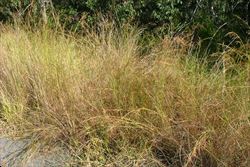
infestation late in the wet season (Photo: Sheldon Navie)
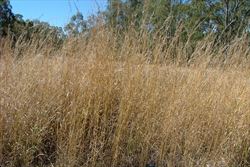
infestation late in the dry season (Photo: Sheldon Navie)
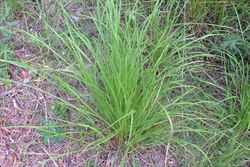
habit with green leaves early in the wet season (Photo: Sheldon Navie)
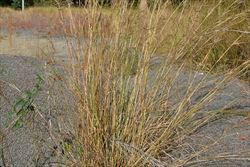
habit in fruit, late in the wet season (Photo: Sheldon Navie)
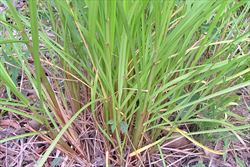
stems and younger leaves (Photo: Sheldon Navie)
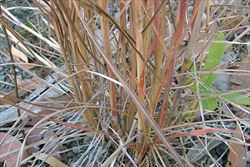
stems and older leaves (Photo: Sheldon Navie)
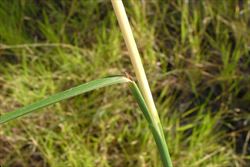
close-up of stem and base of leaf blade (Photo: Sheldon Navie)
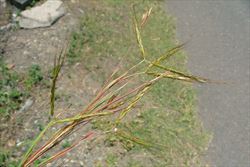
flower spikelets arranged into paired elongated clusters (Photo: Sheldon Navie)

close-up of flower spikelets showing awns (Photo: Sheldon Navie)
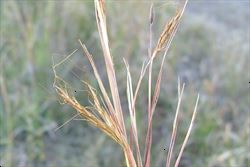
mature flower spikelets (Photo: Sheldon Navie)
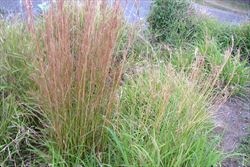
comparison of thatch grass (Hyparrhenia rufa subsp. rufa), on the left, and Coolatai grass (Hyparrhenia hirta), on the right (Photo: Sheldon Navie)
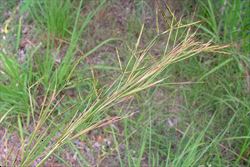
'seed-head' interspersed with leafy bracts (Photo: Sheldon Navie)
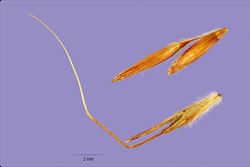
close-up of 'seeds' (Photo: Tracey Slotta at USDA PLANTS Database)
Scientific Name
Hyparrhenia rufa (Nees) Stapf subsp. rufa
Family
Gramineae (South Australia)Poaceae (Queensland, New South Wales, the ACT, Victoria, Tasmania, Western Australia and the Northern Territory)
Common Names
thatch grass, thatchgrass, thatching grass
Origin
Native to Africa (i.e. Eritrea, Ethiopia, Sudan, Kenya, Tanzania, Uganda, Cameroon, Zaire, Benin, Burkina Faso, Ivory Coast, Gambia, Ghana, Guinea, Guinea-Bissau, Mali, Mauritania, Nigeria, Senegal, Sierra Leone, Togo, Botswana, Namibia, South Africa and Swaziland) and Madagascar.
Naturalised Distribution
Naturalised in northern and eastern Australia (i.e. the coastal districts of the Northern Territory and northern, central and south-eastern Queensland).
Also widely naturalised in other parts of the world, including tropical Asia, south-eastern USA (i.e. Florida), the Caribbean, tropical Southern America, the Mascarenes and Hawaii.
Notes
Thatch grass (Hyparrhenia rufa subsp. rufa) is regarded as an environmental weed Queensland and a potential environmental weed in other parts of northern Australia. This tall grass is mainly a weed of roadsides and disturbed sites, however it is starting to spread away from these habitats and is beginning to dominate native pastures and grasslands. It replaces native grasses, particularly after fires, and dominates the understorey of open woodland areas. This adds to the fuel load of these areas, which increases the frequency and intensity of future fires. This leads to a destructive cycle, eventually replacing the native savannas and woodlands with an exotic grassland.
Thatch grass (Hyparrhenia rufa subsp. rufa) is most common in the coastal districts of central and northern Queensland. In recent years it has largely replaced grader grass (Themeda quadrivalvis), another exotic grass, as the dominat grass on roadsides throughout the Mackay-Whitsunday Region. It is now starting to colonise adjacent pasture paddocks and is considered to pose a significant threat to rangeland biodiversity in northern Australia.
Note: Jaragua grass (Hyparrhenia rufa subsp. altissima), which is very similar and causes similar problems, is also present in some parts of eastern Australia. It has become naturalised in northern and central Queensland and in some parts of eastern New South Wales.

